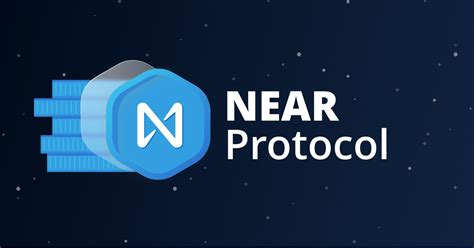Introduction to Cryptocurrency and the Near Protocol
In the rapidly evolving world of digital currencies, cryptocurrencies have become increasingly important for financial transactions. One notable example is the Near Protocol, a cutting-edge blockchain platform that offers a unique consensus mechanism, enabling fast, secure, and decentralized transactions. In this article, we will delve into the world of Near Protocol (NEAR) and its innovative consensus algorithm, exploring how it differs from traditional blockchains.
What is Cryptocurrency?
Cryptocurrencies are digital or virtual currencies that use cryptography for security and are decentralized, meaning they are not controlled by any government or financial institution. They operate on a peer-to-peer network, where transactions are recorded on a public ledger called a blockchain. The most well-known cryptocurrency is Bitcoin (BTC), launched in 2009.
The Problem with Traditional Blockchain
Traditional blockchains have several limitations when it comes to scalability and transaction speed. They require significant computational resources, high energy consumption, and lengthy confirmation times due to the decentralized nature of the network. This hampers their ability to process a large volume of transactions per second.
Near Protocol: A Decentralized Blockchain with a Unique Consensus Mechanism

The Near Protocol (NEAR) was designed to address these limitations by introducing a novel consensus mechanism, called Proof-of-Stake (PoS). This approach allows for faster transaction processing times and higher scalability compared to traditional blockchains like Bitcoin.
How does the Near Protocol’s Consensus Mechanism work?
The NEAR Protocol uses a combination of proof-of-stake and proof-of-collisions mechanisms. Here’s a simplified overview:
- Staking: Users can stake their cryptocurrencies (NEAR tokens) in exchange for receiving NNS (Near Sharded Smart Contracts). The stakers receive a reward based on the number of NEAR they hold.
- Sharding: To maintain decentralization and improve scalability, Near Protocol divides its blockchain into smaller “shards.” Each shard is assigned a specific task, such as validating transactions or storing data.
- Collisions: When two parties attempt to validate the same transaction using their staked NEAR tokens, they compete in a proof-of-collisions mechanism. The first one to successfully prove that they are the true validator wins and gets rewarded with additional NEAR tokens.
Unique Features of the Near Protocol
Several features make the Near Protocol an attractive solution for decentralized applications:
- Fast Transaction Processing: With sharding and proof-of-stake mechanisms, the Near Protocol can process up to 6,500 transactions per second, making it one of the fastest blockchains.
- Scalability: The sharded architecture allows for significant scalability improvements compared to traditional blockchains.
- High Energy Efficiency: Proof-of-collisions is a more energy-efficient consensus mechanism than proof-of-work (PoW), as it requires significantly less computational power.
Conclusion
The Near Protocol represents an innovative approach to blockchain technology, addressing the limitations of traditional blockchains. The unique consensus mechanism used in NEAR Protocol enables fast, secure, and decentralized transactions, making it an attractive solution for a wide range of use cases. As the blockchain landscape continues to evolve, the Near Protocol’s innovative features and scalability make it an exciting prospect for developers, investors, and users alike.
Recommendations
If you’re interested in learning more about the Near Protocol or exploring its potential applications:
1.